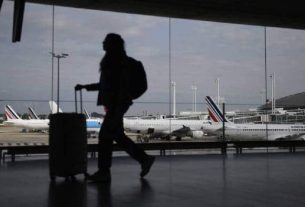
US consumer prices increased solidly in February as the cost of gasoline rose further, leading to the biggest annual gain in a year, but underlying inflation remained tepid amid sluggish demand for services like airline travel.
The Labor Department said on Wednesday its consumer price index increased 0.4% last month after rising 0.3% in January. In the 12 months through February, the CPI gained 1.7%, the largest rise since February 2020, after climbing 1.4% in the 12 months through January.
Last month’s rise in the CPI was in line with economists’ expectations.
Higher inflation is expected in the coming months as price declines early in the COVID-19 pandemic wash out of the calculations, but there is no consensus among economists on whether it would stick beyond the so-called base effects as a faster pace of vaccination allows the economy to reopen quickly.
Some argue a very expansionary fiscal policy, marked by nearly $ 900 billion in additional pandemic relief money in late December and President Joe Biden’s $ 1.9 trillion rescue package, expected to be approved by Congress this week, could stoke inflation. That, together with the Federal Reserve’s monthly bond purchases could cause the economy, which plunged into recession in February 2020, to overheat.
US Treasury yields have spiked in anticipation of stronger economic growth this year and higher inflation. But other economists, including Federal Reserve Chair Jerome Powell, believe any rise in price pressures will be transitory.
There is plenty of slack in the labor market, with at least 18 million Americans on unemployment benefits.
“Ample slack will be a more important driver of inflation trends than a temporary surge in growth as the drag from COVID fades and the $ 1.9 trillion fiscal stimulus package kicks in,” said Jim O’Sullivan, chief US macro strategist at TD Securities in New York.
US stock index futures rose on the data. The dollar was little changed against a basket of currencies. Prices of longer-dated US Treasuries were trading lower.
MORE EXPENSIVE GASOLINE
Gasoline prices increased 6.4% in February, accounting for over half of rise in the CPI. That was on top of a 7.4% gain in January. Food prices climbed 0.2%, with the cost of food consumed at home rising 0.3%. Prices for food consumed away from home edged up 0.1%.
Excluding the volatile food and energy components, the CPI nudged up 0.1% after being unchanged for two straight months. The so-called core CPI was lifted by rises in the costs of recreation, medical care and motor vehicle insurance, which offset declines in prices for airline fares, used cars and trucks and apparel.
The core CPI rose 1.3% on a year-on-year basis, retreating from January’s 1.4% gain.
The Fed tracks the core personal consumption expenditures (PCE) price index for its 2% inflation target, a flexible average. The US central bank has signaled it would tolerate higher prices after inflation persistently undershot its target. The core PCE price index is at 1.5%.
Higher inflation has been flagged by a surge in prices of raw materials and other inputs at both factories and services industries. Surveys this month showed measures of prices paid by manufacturers and services industries racing to levels last seen in 2008. Consumers are also expecting higher inflation in the near-term and more small business are planning to raise prices.

